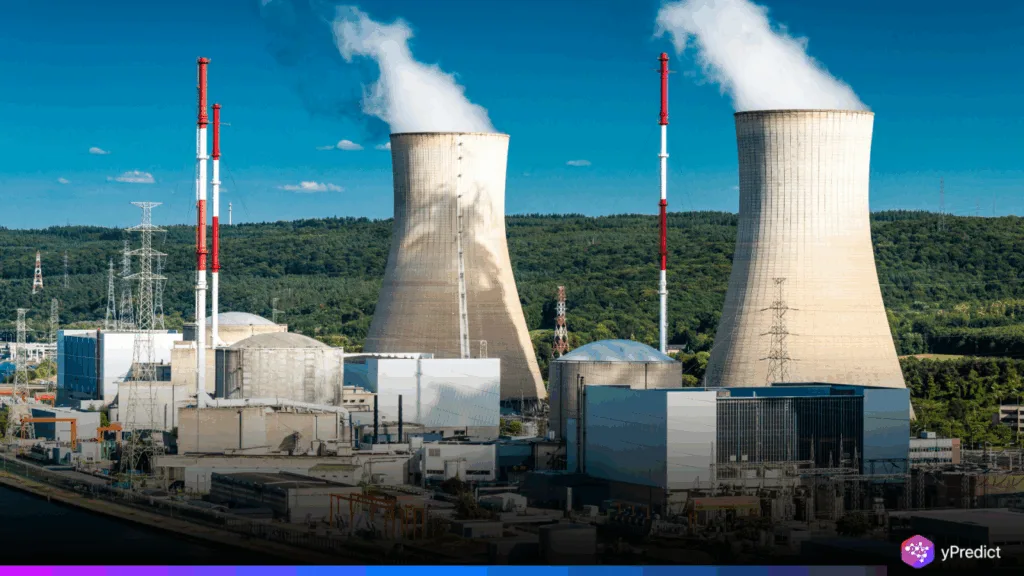
AI’s energy demand is skyrocketing, doubling roughly every 100 days, prompting renewed interest in nuclear power. The U.S. faces a strategic challenge as China dominates global energy production, producing over 10,000 TWh annually, more than the U.S., EU, and India combined. The recently passed “Big Beautiful Bill” removes solar subsidies and encourages nuclear investment, aiming to reduce regulatory hurdles and secure power for AI infrastructure. Stocks in uranium and nuclear tech surged following pro-nuclear messaging from U.S. officials. Bottom line: the U.S. cannot maintain AI dominance without stable, scalable energy, and nuclear is emerging as the preferred solution.
AI’s Growing Energy Crisis
AI is consuming energy at an unprecedented rate. According to the World Economic Forum, AI’s computing power needs now double every ~100 days. That trajectory is unsustainable without major energy infrastructure upgrades. Data centers, especially those training and running large language models like ChatGPT and Gemini, require a constant high-wattage supply. From 88 GW in 2022, global data center demand is expected to exceed 300 GW by 2030. This explosive growth turns power generation from a background utility into a frontline national strategic issue. The U.S. faces a problem: China is winning the energy race. With over 10,000 TWh of annual generation and aggressive expansion plans.
China is well-positioned to power its AI ambitions indefinitely. By contrast, the U.S. must either catch up or fall behind. Not in AI talent or innovation, but in the raw energy needed to sustain it. That’s where nuclear comes in. Compared to solar and wind, nuclear provides 24/7 baseload zero-carbon energy, and therefore, this source is specifically well-suited to data centers. Unless the U.S. takes this issue seriously by investing in it. It will end up choking its AI leadership with something as basic as electricity. The energy arms race is now part of the AI arms race.
The Political Shift Toward Nuclear
The “Big Beautiful Bill,” recently signed into law by President Trump, signals a policy shift with major implications for the energy-AI nexus. First, it ends solar subsidies, a move that pushes the market toward more stable, high-output alternatives. Second, with its projected With a $3.4 trillion deficit impact over a decade, the bill essentially bets on rapid economic expansion, driven in part by AI, to “grow the country out of debt.” That growth needs power.
Nuclear is the standout candidate. U.S. Energy Secretary Chris Wright publicly committed to reviving the sector, calling nuclear “the energy-dense, always-ON energy source we’ve smothered for decades.” The response was immediate. Stocks of nuclear and uranium companies such as Cameco (CCJ), Centrus (LEU) and Oklo (OKLO) boomed. The intent was not ambiguous: the U.S. is ready to slice red tape and to kick out the nuclear to get its AI future.
This isn’t just political posturing. AI doesn’t run without electricity, and no other technology provides the reliability, scale, and emissions-free credentials that nuclear does. While climate debates continue, the AI economy needs clean uptime now. The U.S. government appears to recognize that powering the AI era will require more than ambition and GPUs; it requires kilowatt-hours, and nuclear is poised to deliver them.
Energy Is AI’s Foundation
The AI revolution isn’t just about algorithms and chips; it’s about whether nations can power them. The U.S., despite its early lead in AI innovation, faces a hard truth: without a robust energy backbone, it risks ceding ground to China. The shift toward nuclear, both politically and economically, reflects a deeper reality: clean, stable, round-the-clock power is no longer optional; it’s strategic. As nuclear comes back into favor, not just as climate policy but as AI infrastructure, the question now becomes: Will the U.S. act fast enough to scale nuclear before AI outgrows its grid?






